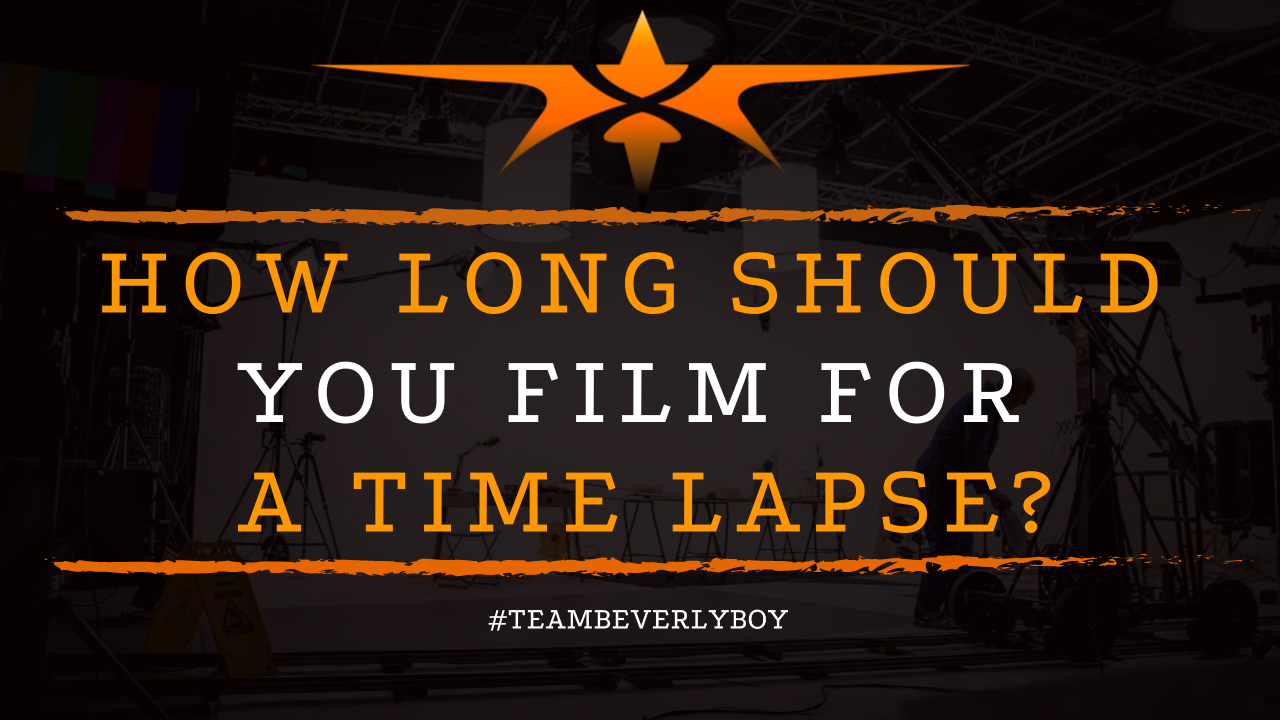
How Long Should You Film for a Time Lapse?
Figuring out how long to film for a time lapse video is something that even newly aspiring cinematographers must figure out at some point in their career. In fact, learning about time lapse video is an important technique. It can bring a cinematographer to the next level of their career. But, knowing how long to film for a particular time lapse is more a matter of math than it is a science. In fact, with some simple understanding of frame rates and how filmmaking works. You can quickly figure out just how long you should film for a time lapse project of your choice.

It’s All About Frame Rate
First and foremost, when you’re trying to decide how long to film for a time lapse you’ve got to learn about frame rate. Much of the time lapse videography process revolves around frame rates.
So, a simple understanding of how frame rates work and how many fps an average film is will help you to establish your time lapse.
Standard frame rate is generally between 24 and 30 frames per second or 24 fps to 30 fps. Films can be captured at 60 fps or more using a professional camera. However, slowing these films down significantly will produce the opposite of a time lapse appearance which is slow motion.
For example, a time lapse video might only show 1 or 2 frames per second. Thus, instead of filming at 30 frames per second, perhaps you capture a single frame every second.
Setting Your Camera for Time Lapse
As you’re considering how long you should film for a time lapse, setting your camera up to capture the desired footage is a big part of the process.
Calibrating your camera for time lapse could be rather challenging for someone that’s not incredibly technical. Your camera can be used to establish the time lapse mode through calibration.
The goal of calibrating your camera is to set it so that it shoots with a slow shutter. This way, each image that is captured will be smooth and clear.
Another option you can use, if you don’t know how to slow your camera and calibrate the shutter speed, is to capture the desired footage over a longer duration of time and then speed up your footage in post-production so that it creates a time lapse effect.
How Long Should You Film for a Time Lapse
Knowing how long to film for a time lapse is really a matter of what you’re aiming to achieve. If you intend to speed up your time lapse footage rather than slow your shutter speed, you’ll need to film consistently for a long period of time and then speed the footage in post.
However, if you can calibrate your camera to capture the desired frames per second, minute, or hour then you can sequence those frames into your time lapse footage. Plan out how you want your time lapse to appear.
Consider the following intervals to capture images at for your time lapse:
- Every second – to capture moving traffic, clouds, or drives.
- Every three seconds – to capture the sunrise, sunset, slow moving cross, or the moon and sun.
- Every 15 seconds – to capture moving shadows or the sun as it moves across the sky.
- Every 30 seconds – to capture the stars as they move across the sky.
- Every 5 minutes – to capture a construction project.
Calculations
To determine how long you should film, determine how frequently you will capture footage (every second, every minute, every five minutes) and then determine how long you want your finished time lapse video to be.
For example, if you want your finished video to be shown at 24fps and you are going for a 30 second time lapse, you’ll need 30×24 = 720 frames. Thus, if you are capturing 1 frame per second, you would need to film for 720 second.
If you’re capturing 1 frame per minute, you would film for 720 minutes. And finally, if you’re filming 1 frame every 5 minutes, you would film for 60 hours.
So, how long should you film for a time lapse? It all really depends on the desired output of your time lapse video and what you desire.


